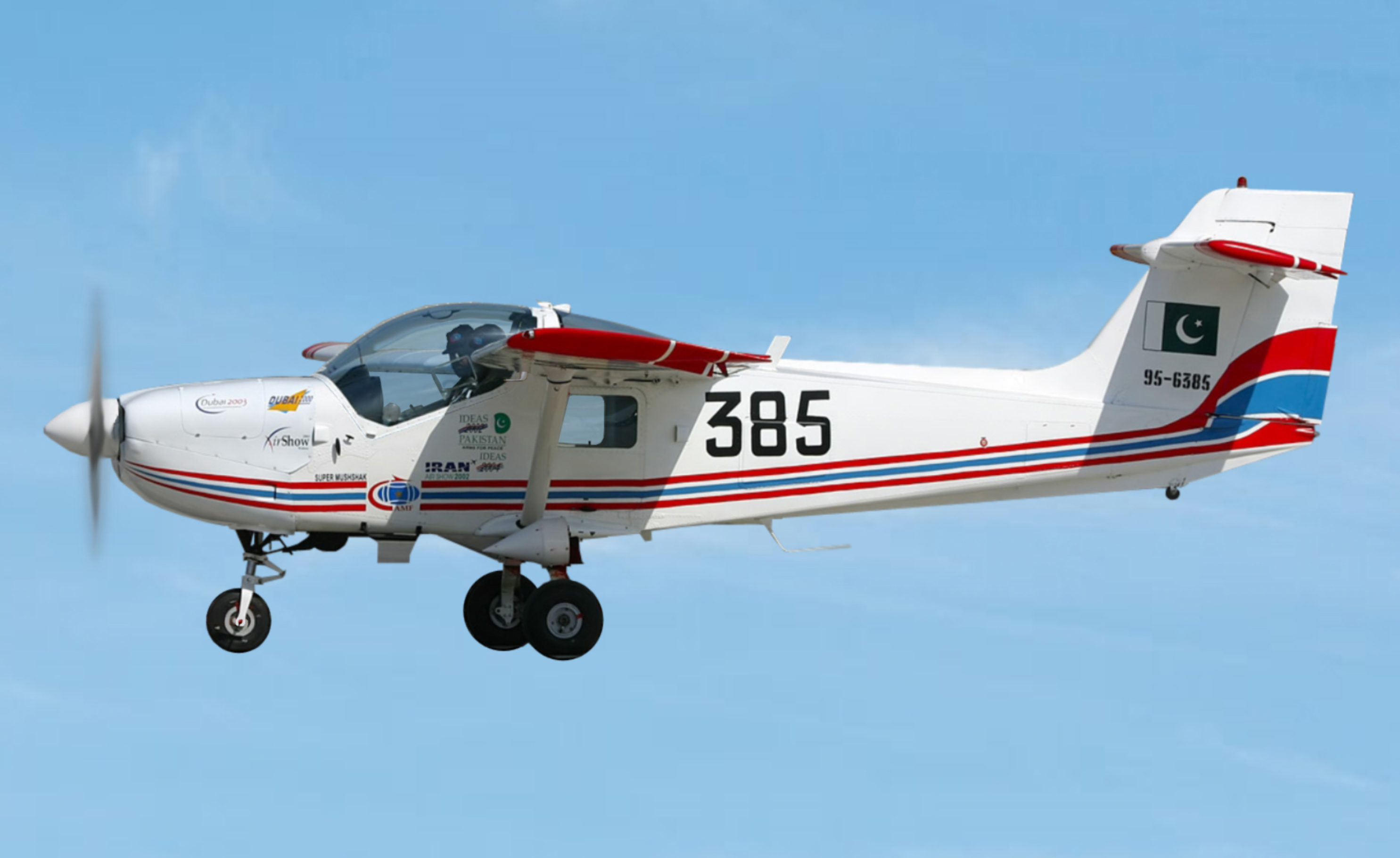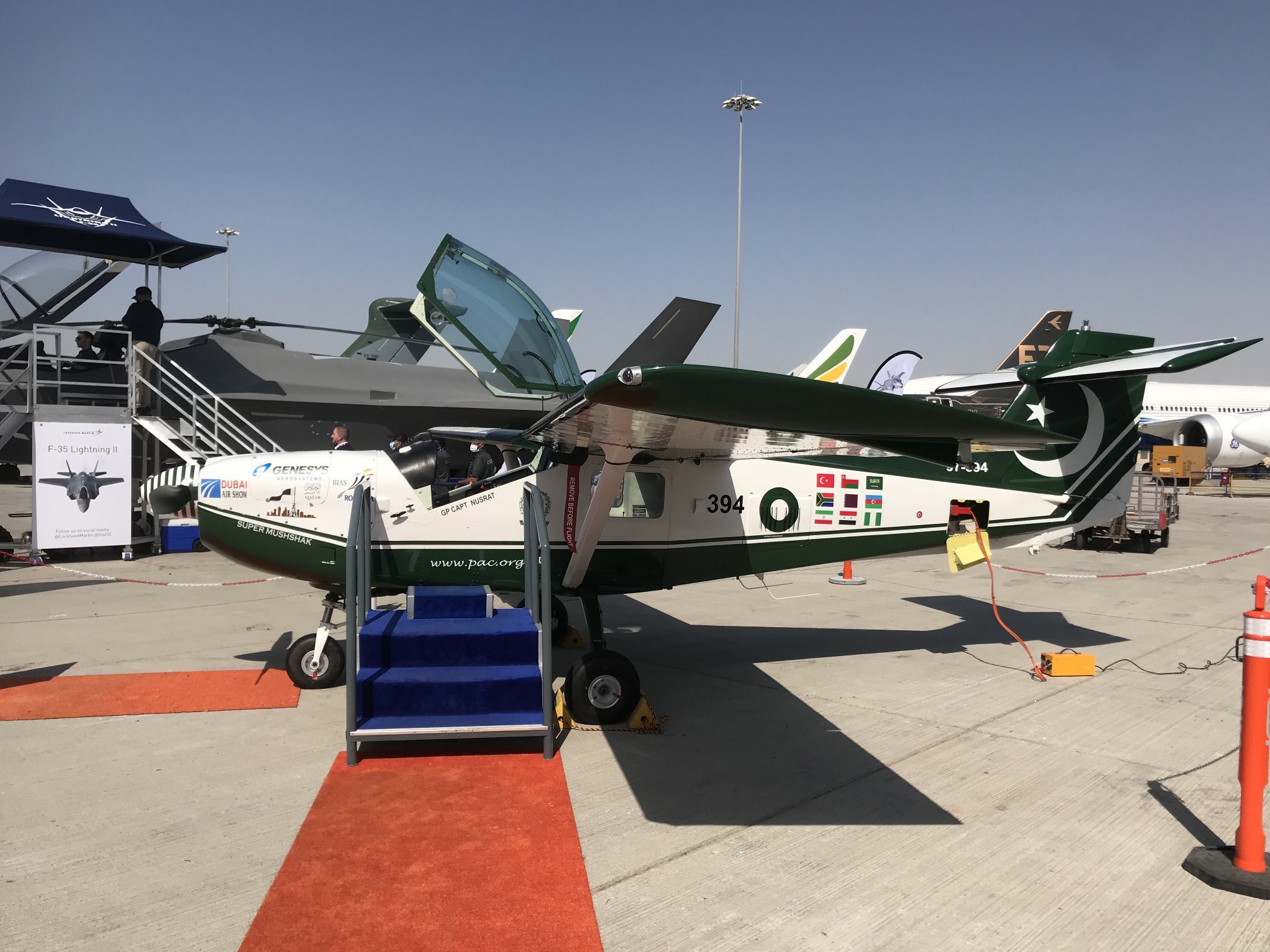The Turkish Ministry of Defense recently announced that the Turkish Air Force (TurAF) command had received three MFI-17 Super Mushshak training aircraft from Pakistan Aeronautical Complex (PAC).
The Super Mushshak training aircraft is a military trainer/light attack aircraft designed and manufactured by the Pakistan Aeronautical Complex (PAC) for domestic and export purposes.
The official Twitter account of the Republic of Turkey’s Ministry of National Defense released information, on October 31, regarding the induction of the new military trainer aircraft produced in Pakistan.
“The acceptance activities of three Super Mushshak aircraft produced by Pakistan Aeronautical Complex (PAC) within the scope of Initial Trainer Aircraft Project were completed and entered into the inventory of our Air Force Command at Yalova Airport Command,” the MOD tweeted.
Başlangıç Eğitim Uçağı Projesi kapsamında Pakistan Aeronautical Complex (PAC) tarafından üretilen üç adet Super Mushshak uçağının kabul faaliyetleri tamamlanarak Yalova Hava Meydan Komutanlığında Hava Kuvvetleri Komutanlığımızın envanterine girdi. pic.twitter.com/xejAZt1TXH
— T.C. Millî Savunma Bakanlığı (@tcsavunma) October 31, 2022
In 2017, Turkey signed a deal with Pakistan to order 52 Super Mushshak trainers from Aeronautical Complex Kamra (PAC Kamra) on the sidelines of the International Defense Industry Fair (IDEF).
The delivery was initially scheduled to begin in 2020 but was postponed because of delays brought on by the COVID-19 pandemic. The remaining 49 aircraft will now be delivered to the TurAF by PAC over the next two years.

Nonetheless, the agreement marked a turning point in Turkish-Pakistani defense relations, boosting collaboration between the two countries.
The Saab MFI-15 served as the basis for the plane’s design. The rights to the aircraft, which made its first flight in the 1970s, were sold to Pakistan.
Later, PAC developed an improved version of the aircraft and assigned the designation MFI-17. Turkey will replace the Italian-designed SF-260 trainers with Super Mushshak.
In 2019, it was reported that Pakistan successfully equipped a variant of the Super Mushshak with anti-tank missiles. At the time, it was stated that a weaponized version of Super Mushshak, which also boasts upgrades to its targeting capability, would be equipped with “Buraq laser-guided missiles.”
The Super Mushshak employs an engine from the US based on a design exported by Sweden’s Saab. In the past two decades, the Pakistan Aeronautical Complex (PAC) in Kamra has produced over 300 Super Mushshak aircraft for domestic and export usage.
Besides Turkey, Pakistan has exported this trainer aircraft to several countries, including Azerbaijan, Saudi Arabia, Oman, Iran, South Africa, Qatar, and Nigeria.
MFI-17 Mushshak Basic Trainer Aircraft
Pakistan Aeronautical Complex (PAC) designed and developed the MFI-17 Mushshak, a single-engine primary trainer aircraft for the Pakistan Armed Forces. There are currently 200 Mushshaks operational around the world.
The MFI-17 was created to train PAF Air Force pilots. The aircraft has a blind flying panel that allows for instrument flying missions. It was designed to comply with the FAR23 certification criteria in the utility and aerobatics classes in the United States.
The Mushshak was built to function on challenging airfields, even in bad weather conditions. It can perform various missions, including advanced air control, border patrol, reconnaissance, artillery fire observation, liaison, camouflage assessment, and transportation.

The MFI-17 has two inbuilt fuel tanks that hold 48 gallons of fuel. It also contains an electric fuel pump for use during emergency missions. The trainer aircraft is outfitted with a Bendix fuel injection system, dual flight control systems, tricycle-type landing gear, electrical trim, rudder pedals, ailerons, and environmental control system.
It has a large luggage compartment on the back side of the cockpit that is easily accessible via a door on the port side of the fuselage. The Mushshak has a large glass cockpit that can fit two crew members — an instructor and a trainee pilot. It has two adjustable seats combined with locked inertia reels, and a third seat on the back is optional.
The crew has excellent visibility because of the round glass canopy. The cockpit’s air conditioning system uses Enviro R-134 to keep the temperature steady. There are six hard points on the aircraft.
The aircraft can be armed with two 7.62mm cannons, two 75mm unguided rocket pods, four 68mm unguided rocket pods, and six anti-tank missiles. The range of the aircraft is 800 kilometers, and a service ceiling of 4,100 meters.
- Contact the author at ashishmichel@gmail.com
- Follow EurAsian Times on Google News





